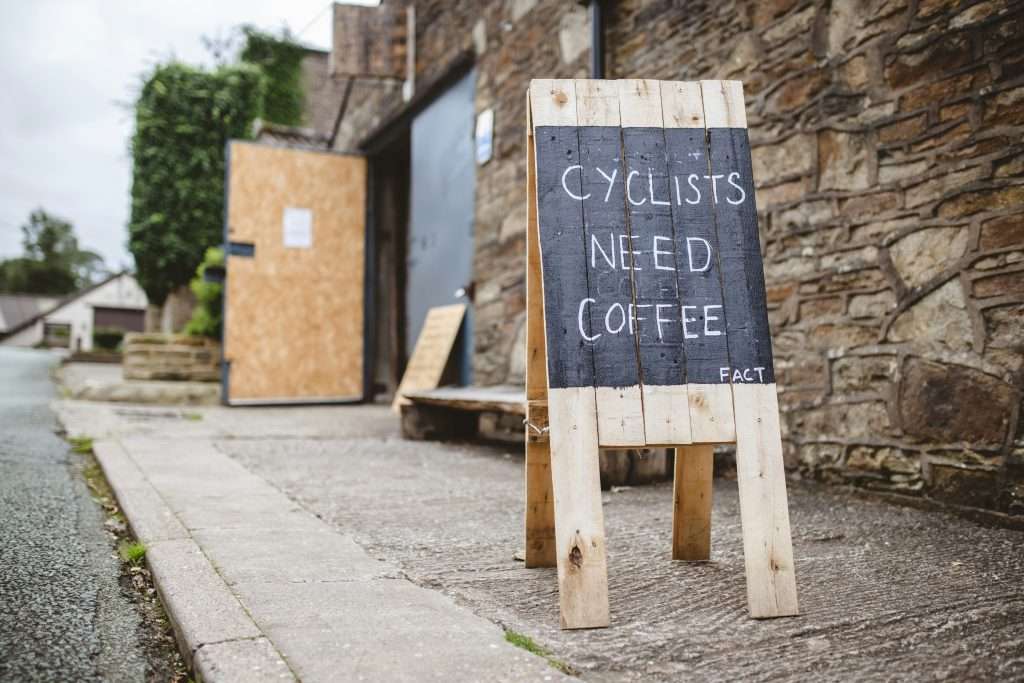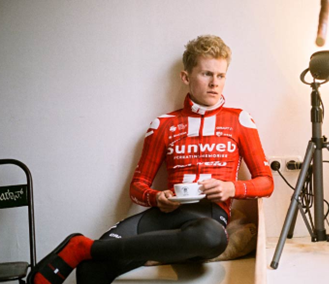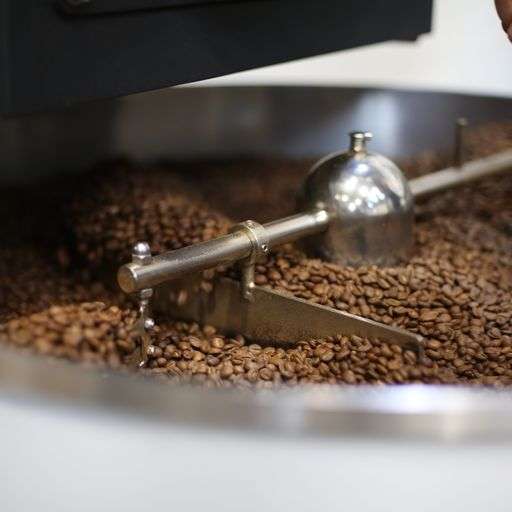As we discussed in the previous blog, ‘Coffee & Cycling | A Perfect Pairing’, coffee has long been engrained in cycling culture. Many group rides start, end, or sometimes include stops at coffee shops. Coffee-related companies have sponsored some of the most iconic teams in the sport’s history, including Eddy Merckx’s 1969 Tour winning Faema team, Café de Colombia in the 80s, Saeco in the 90s, Jittery Joe’s in the 2000’s, and Segafredo more recently. Today we look at what we’ve learnt over the years about coffee & caffeine and how coffee and caffeine affect performance – including how its effects change for older athletes. Here’s what you need to know.
Coffee and Caffeine for Cyclists
There have been a lot of claims from people that certain foods and drinks improve athletic performance, but not many do. Caffeine on the other hand we know, delivers.

What is Caffeine and why is there caffeine in coffee?

Caffeine is produced by plants as a defence mechanism. Researchers have identified two primary roles for caffeine in the coffee plant’s life cycle. Firstly, caffeine is a natural insecticide – it appears in the coffee cherry and its seeds (the bean) to keep pests at bay and ensure the beans are consumed only by something large enough to spread them. Secondly, caffeine helps the plants spread – the first seeds to start germinating will release caffeine to poison others nearby, ensuring that the plants don’t crowd each other out of good soil and light.
As an ergogenic aid, caffeine has been shown again and again to improve cycling performance. The mechanism responsible for improved performance is a bit less certain, but most of the science points to increased mental alertness, increased fat metabolism (a bit), increased calcium availability in muscle cells, and reduced physical feelings of fatigue.
Caffeine and Athletic Performance

Caffeine’s effects on athletic performance are well-documented. The World Anti-Doping Agency has banned high levels of caffeine from competition between 1984- 2004. Although it’s no longer banned, caffeine consumption is still monitored by WADA (The World Anti-Doping Agency).
Caffeine Dosage for Athletes
When it comes to caffeine, more is not necessarily better and too much is not good. Just 2-3 milligrams of caffeine per kilogram of bodyweight can be enough to improve performance, particularly for athletes who rarely consume caffeine. Athletes who habitually consume caffeine, experience positive effects with consumption of up to about 6mg/kg. Between 6-9 mg/kg is more likely to make you jittery, nervous, or nauseated. To put 3-6mg/kg into real world context, a 65-kilogram athlete who regularly consumes coffee may perform well after consuming 195mg and may tolerate up to 390mg. Filter and Cafetiere coffee typically has about 7-12mg/25ml (or 72-120mg for 250ml) and espresso has about 75-85mg.
Exactly how much caffeine improves athletic performance varies. Some studies show no improvement in maximal efforts, but most show at least some measurable impact on endurance, averaging around 3%. However, like caffeine’s effects generally, this is also genetically determined. A study of cyclists riding 10k time trials found that depending on the rider’s gene variation, some athletes improved their time with caffeine by as much as 6.8%, some experienced no effects, and others experienced a 13.7% decrease in performance!
There’s a good chance you consume a performance-enhancing amount of caffeine every morning without even realizing it.
Effects of Caffeine on the Body
One of the most interesting ways caffeine improves performance is by blocking adenosine receptors. Normally, as adenosine binds to more of its receptors around the body during the day, neural activity slows and we feel tired. Hard exercise can lead adenosine to accumulate more rapidly, which may play a role in central fatigue. However, with caffeine bound to those receptors, the effect of adenosine is blunted and you stay more alert.
Caffeine metabolism does change with age
Caffeine’s impact and the pace at which the body metabolizes it are highly dependent on genetics. If having coffee in the afternoon makes it tough to get to sleep at night, your rate of caffeine metabolism may be part of the reason. You may have been able to drink coffee after dinner and get to sleep when you were in your 20s and 30s, but now in your 50s and 60s a coffee after 2pm keeps you up all night. You’re not imagining it.
In the long term, quality sleep will do more to improve your performance than caffeine, so go for a walk to cure the 3 o’clock slump instead of grabbing a coffee. The slowing of caffeine metabolism with age also means older athletes should experiment with consuming caffeine earlier before workouts and races, like 90-120 minutes beforehand instead of 60.
Is Coffee a diuretic (for daily drinkers)?
One of the most frequent questions I get asked about caffeinated coffee is whether it is a diuretic. The answer is that it depends on how much coffee you consume. If you drink coffee – or other caffeinated beverages – daily, then continuing to consume that level of caffeine does not increase water loss. If you don’t regularly consume caffeine and consume it occasionally for the ergogenic effect, then you may experience a minor diuretic effect.
Caffeine Side Effects and Misconceptions
Like any psychoactive substance, caffeine does some undesirable things too. According to the Mayo Clinic, over 400 mg a day can cause headaches, insomnia, upset stomach, and anxiety. Large doses can be fatal, and while this is unlikely with beverages it’s possible with tablets or powdered caffeine.
Caffeine can hinder uptake of certain nutrients. Most notably for athletes, it can temporarily reduce Iron absorption by up to 90%. It also affects the body’s metabolism of calcium, Vitamin D, B-vitamins, and Manganese, among others. Luckily, impacts are short-term and reduced at lower doses. Use moderation in how much caffeine you consume and take vitamins and supplements at least an hour apart from caffeine to reduce unwanted interactions.
Which coffee has more caffeine – Light or Dark Roast?
It depends.

I have read often: A dark-roasted coffee bean contains more caffeine than a light-roasted coffee bean due to its stronger flavour.
An opposing view held by many is that the darker the roast level, the lower a bean’s caffeine since much of it is lost or “burned off” during roasting.
I would like to dispel both these myths. The caffeine content is virtually the same.
Caffeine changes very little during a roast. Any significant variation would require a roasting temperature above 300° C. Since temperatures rarely exceed 240° C, a bean’s caffeine content remains relatively static across all roast levels.
Even though a bean’s caffeine content changes little during roasting, a bean’s caffeine per volume and per weight is altered considerably—not because the caffeine changes but because the size and weight of the beans change. The longer a bean is held in the roaster, the darker in colour, lighter in weight, and larger in size it becomes.
When does the caffeine content change?
This happens when roasted coffee is measured for brewing or packaging. Since a bean loses weight (mainly water) during roasting, its caffeine content by weight increases while its caffeine content by volume decreases. Confused yet? Let’s put this principle into practice by measuring some coffee.
- Dark-roast coffees measured by volume with a scoop contain fewer coffee beans due to their larger size, resulting in a weaker brew and less caffeine per cup than a light-roast coffee measured in the same manner. The fact is you are not getting the most from a dark-roast coffee if you measure it by volume.
- On the other hand, dark-roasted coffees measured by weight require MORE coffee beans for brewing, because each bean weighs less than a coffee bean that has been roasted lighter, resulting in a full-flavored brew and more caffeine per cup than a light roast.
In summary – if you weigh your coffee each time you brew you’ll find that the pile of dark roast coffee will be larger since it has lost more water during roasting and expanded, against the light roast. So, it takes a higher bean count (volume) of dark roast to equal the same weight as a light roast when you’re dosing to brew coffee.
Finally – Be Warned!
TAMPA, USA – An international study led by the University of South Florida (USF) found that caffeine impacts what you buy and how much you spend when shopping. The research team ran three experiments in retail stores — an industry that’s increasingly been adding coffee bars near their entrances.
In their study published in the Journal of Marketing, they found that shoppers who drank a cup of complimentary caffeinated coffee prior to roaming the stores spent about 50 percent more money and bought nearly 30 percent more items than shoppers who drank decaf or water.
“Caffeine, as a powerful stimulant, releases dopamine in the brain, which excites the mind and the body. This leads to a higher energetic state, which in turn enhances impulsivity and decreases self-control,” said lead author Dipayan Biswas, the Frank Harvey Endowed Professor of Marketing at USF. “As a result, caffeine intake leads to shopping impulsivity in terms of higher number of items purchased and greater spending.”
The experiments consisted of setting up an espresso machine at the entrances of a retail chain and home goods store in France and a department store in Spain. Upon entry, more than 300 shoppers were provided a complimentary cup — with about half offered coffee that contained about 100 mg of caffeine and the others decaf or water.
The team found that caffeinated individuals purchased a significantly higher number of items and spent more money compared to those who had decaf or water. Researchers found that caffeine also impacted what types of items they bought. Those who drank caffeinated coffee bought more non-essential items than the other shoppers, such as scented candles and fragrances. However, there was a minimal difference between the two groups when it came to utilitarian purchases, such as kitchen utensils and storage baskets.

Leave a Reply